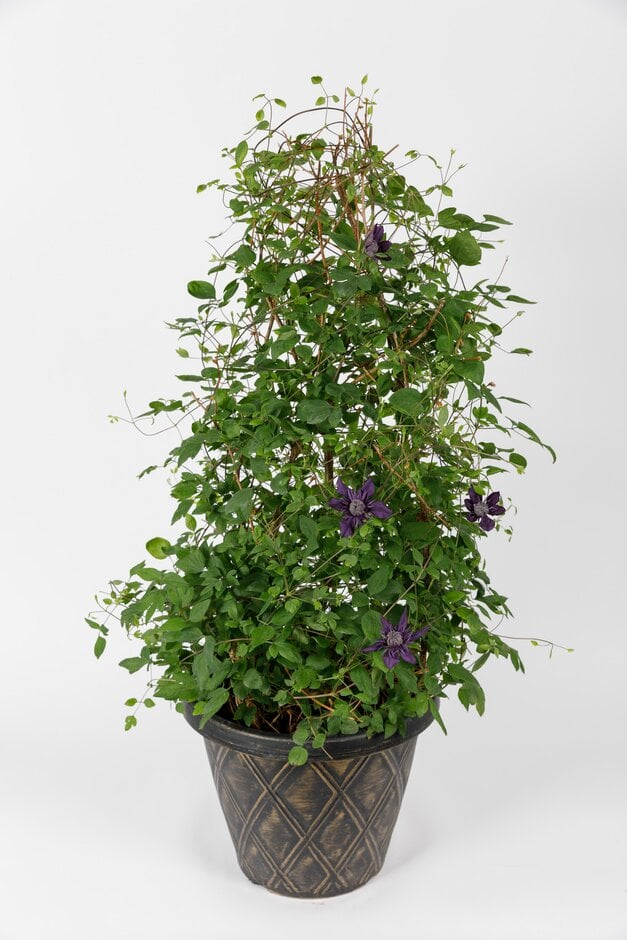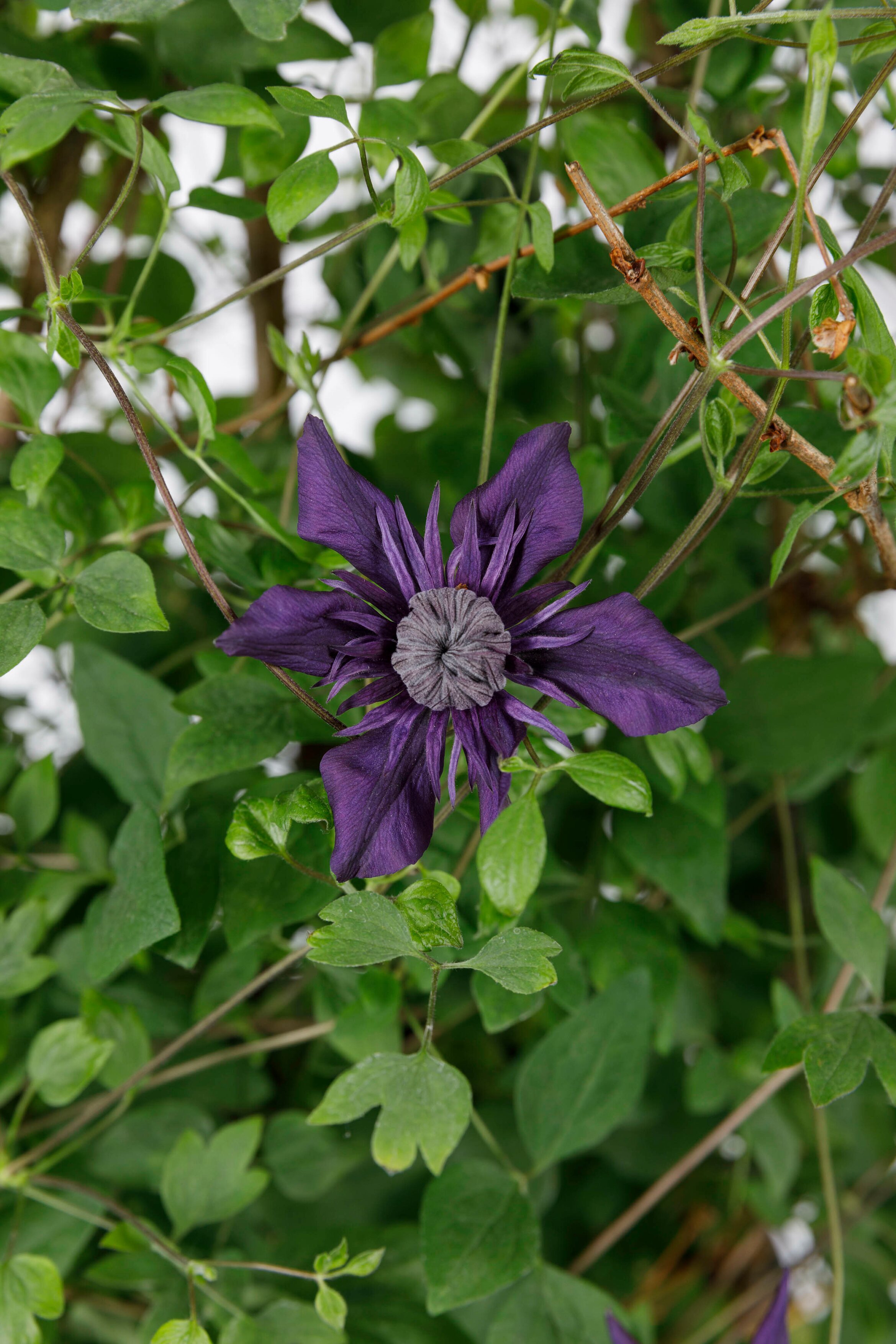Clematis 'Kokonoe'PBR (d)
clematis 'Kokonoe'
A deciduous climber to 2.5m tall with dark green foliage and deep purple flowers borne from late spring into autumn. The first flowers borne in early spring emerge as singles but later blooms are doubles with an inner ruff-like ring of tepals
Size
Ultimate height
1.5–2.5 metresTime to ultimate height
2–5 yearsUltimate spread
0.5–1 metresGrowing conditions
Moisture
Moist but well–drained, Well–drainedpH
Acid, Alkaline, NeutralColour & scent
| Stem | Flower | Foliage | Fruit | |
| Spring | Purple | Green | ||
|---|---|---|---|---|
| Summer | Purple | Green | ||
| Autumn | Purple | Green | ||
| Winter |
Position
- Full sun
Aspect
South–facing
Exposure
Sheltered Hardiness
H4Botanical details
- Family
- Ranunculaceae
- Native to GB / Ireland
- No
- Foliage
- Deciduous
- Habit
- Climbing
- Potentially harmful
- Skin irritant. Wear gloves and other protective equipment when handling. Pets (rabbits): Harmful if eaten. For further information and contact numbers regarding pets, see the HTA guide to potentially harmful plants
- Genus
Clematis can be deciduous or evergreen shrubs or herbaceous perennials, mostly climbing by twining leaf-stalks, and often with showy flowers. Some have attractive fluffy seedheads in autumn
- Name status
Accepted
- Horticultural Group
- Late Large-flowered clematis are deciduous climbers with large, star-shaped flowers to 15cm wide, opening on the current year's growth in summer and autumn
How to grow
Cultivation
Plant in a moisture-retentive, well-drained soil, in a warm, sheltered position in full sun. Plant with the crown 5-8cm deep to encourage new shoots to grow from below ground level. Can be grown in containers, at least 45cm deep and wide, in a peat-free, loam-based potting compost, ideal for conservatory cultivation. See also clematis cultivation for further advice
Propagation
Propagate by layering or semi-hardwood cuttings
Suggested planting locations and garden types
- Cottage and informal garden
- City and courtyard gardens
- Patio and container plants
- Flower borders and beds
- Wall side borders
Pruning
Pests
May be susceptible to aphids and caterpillars on young growth; petals can be eaten by earwigs
Diseases
May be susceptible to honey fungus (rarely), clematis wilt and clematis slime flux
Love gardening
Sign up to receive regular gardening tips, inspiration, offers and more
View our Privacy Policy
Get involved
The Royal Horticultural Society is the UK’s leading gardening charity. We aim to enrich everyone’s life through plants, and make the UK a greener and more beautiful place.

